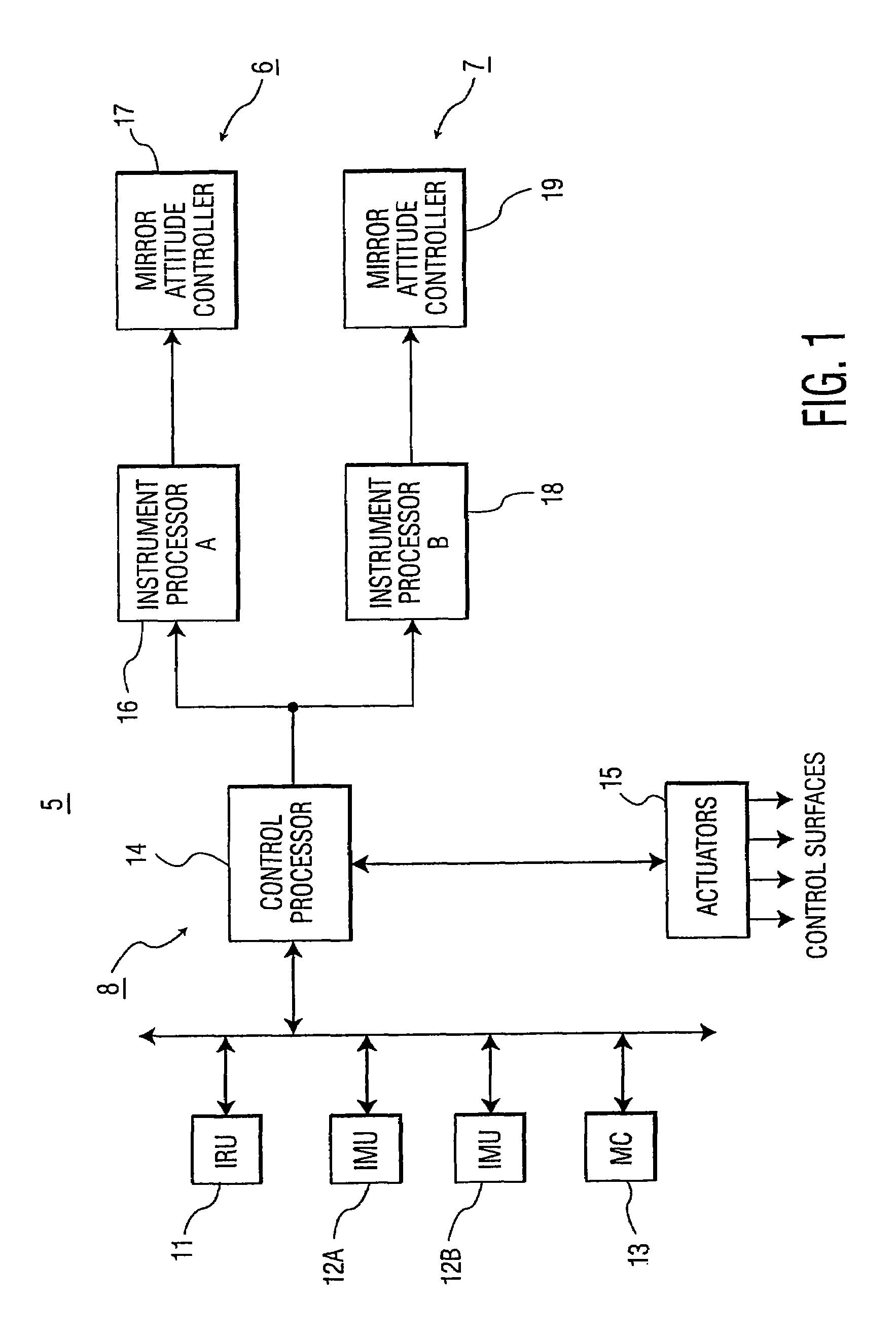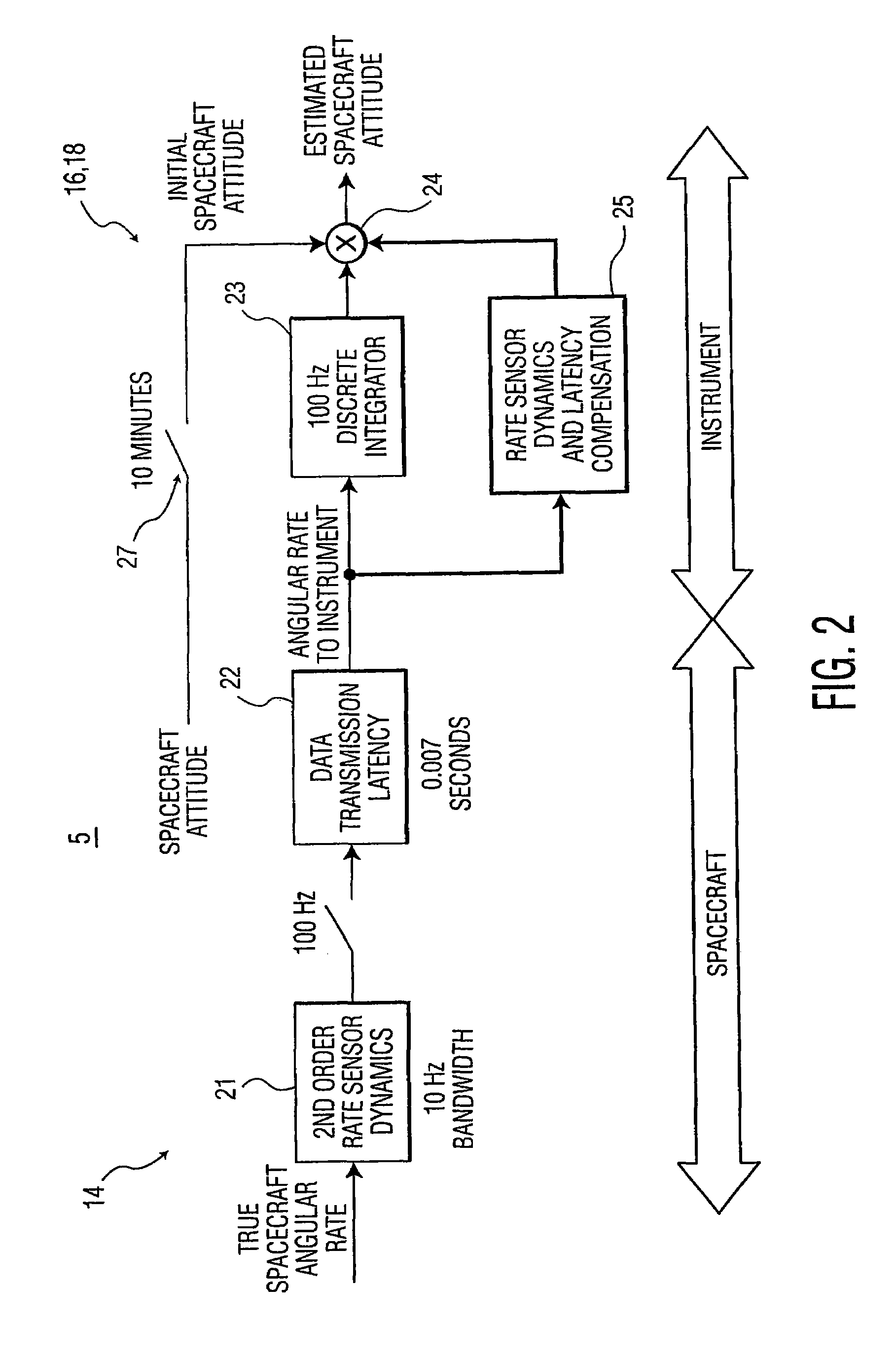System and method for correcting attitude estimation
a technology of attitude estimation and system, applied in the field of attitude correction of instruments, can solve the problems of insufficient accuracy of the attitude data provided by the iru, latency in data transfer of the rate data from the spacecraft, and additional errors caused by the spacecraft, so as to reduce the error of orientation attitud
- Summary
- Abstract
- Description
- Claims
- Application Information
AI Technical Summary
Benefits of technology
Problems solved by technology
Method used
Image
Examples
first embodiment
[0058]Referring next to FIG. 3, there is shown rate sensor dynamics and latency compensator 25. As shown, compensator 25 includes a constant gain, or fixed gain transfer function, generally designated as 31. In this embodiment, the compensation output, θcomp), is related to the compensation input, r, by the compensation gain constant, Kcomp:
θcomp=Kcompr
second embodiment
[0059]Referring next to FIG. 4, there is shown rate sensor dynamics and latency compensator 25. As shown, compensator 25 includes a transfer function that varies as a function of frequency, generally designated as 41. In this embodiment, the compensation output, θcomp, is related to the compensation input, r, by a general difference equation. A representative second-order difference equation is:
θcomp(n)=−a1θcomp(n−1)−a2θcomp(n−2)+b0r(n)+b1r(n−1)+b2 r(n−2)
where the constants a1, a2, b0, b1, and b2 are chosen to match the desired transfer function. The desired transfer function may be of any order.
[0060]It will be understood that compensators 31 and 41 may be of an analog implementation or a digital implementation.
[0061]It will be understood that the present invention may be used with any instrument, or device disposed in a vehicle, or spacecraft, where the instrument, or device requires short term attitude information from a remote device having a rate sensor disposed in the same veh...
PUM
 Login to View More
Login to View More Abstract
Description
Claims
Application Information
 Login to View More
Login to View More - R&D
- Intellectual Property
- Life Sciences
- Materials
- Tech Scout
- Unparalleled Data Quality
- Higher Quality Content
- 60% Fewer Hallucinations
Browse by: Latest US Patents, China's latest patents, Technical Efficacy Thesaurus, Application Domain, Technology Topic, Popular Technical Reports.
© 2025 PatSnap. All rights reserved.Legal|Privacy policy|Modern Slavery Act Transparency Statement|Sitemap|About US| Contact US: help@patsnap.com



